For a long time I've been trying to write about George Nakashima and each time I stop because I'm afraid I'll fail to convey its grandeur and complexity. Because Nakashima can't be spoken of only as an extraordinary carpenter or designer. He is much more than that, he is a philosopher of wood. His work with wood is not that of a very good artist or a man gifted with very good woodworking skills. It comes from a superior understanding of our relationship with nature, interwoven with Japanese way of woodworking, special and unique precisely because of its simplicity.
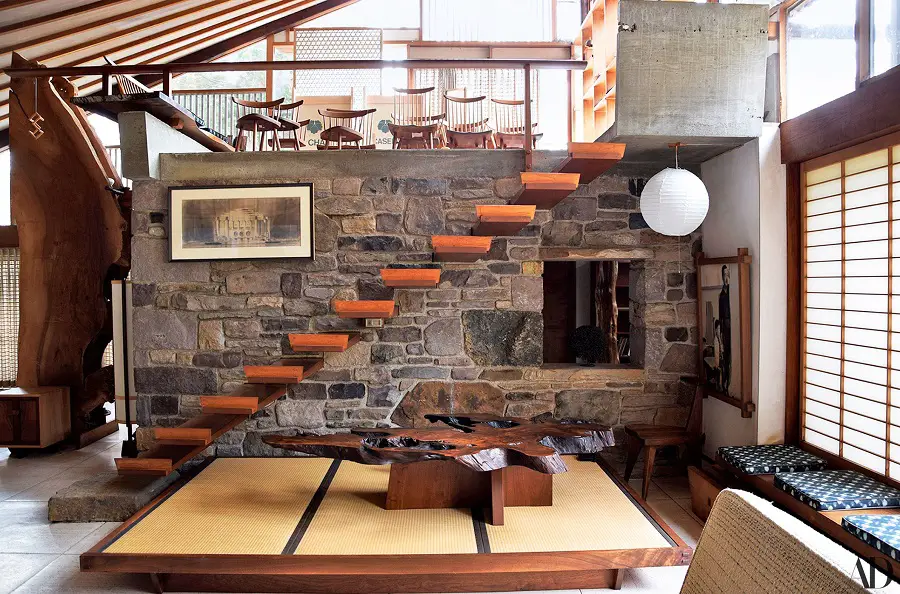
Nakashima used to say that a tree is our most intimate contact with nature. All his work and philosophy revolves around this concept. He believed that a tree should be cut down when it reaches maturity, because after that, like man, it will die and return to the ground. Cutting it down and using it to make useful objects in the house gives it a chance to live another life. That is why objects should be used, not treated as something precious. This is the only way they fulfil their purpose. "The more they are used, the more beautiful and durable they become. There is nothing more uninteresting than a shiny surface that looks like it has never been used."
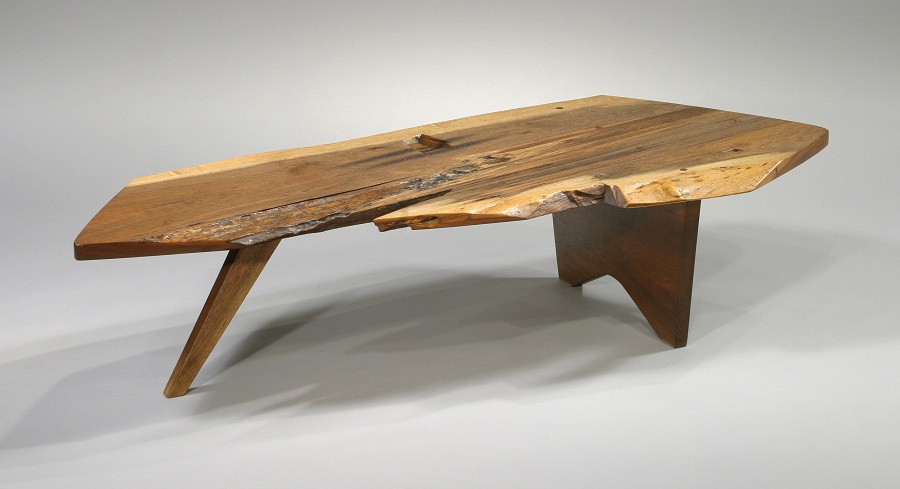
To understand where this philosophical adoration of the woodworking craft comes from, one must take a look at its life. He was born in 1905 in the USA into a family of Japanese immigrants. He studied architecture at the University of Washington and a master's degree at the School of Fine Arts in Paris. After his studies, he went to Japan, where he met his relatives and learned the Japanese philosophy of woodworking. He works as an architect in the Tokyo studio of a renowned American architect, Antonin Raymond. He is sent to work on a project in India, where he meets Sri Aurobindo, an Indian philosopher, and becomes his disciple. He moves to an ashram and it is here that he makes his first piece of furniture.
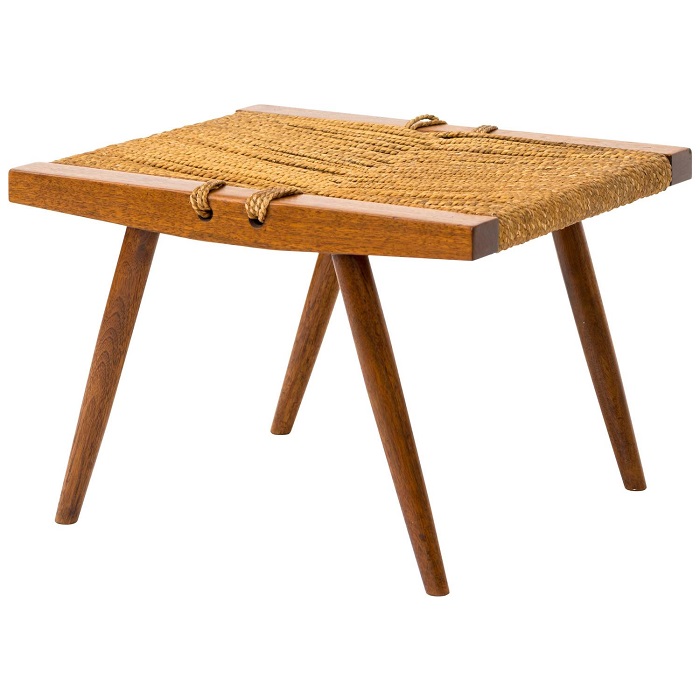
Unfortunately the war starts and they have to go home. He first passes through Tokyo where he meets his future wife and together they arrive in the USA. Pearl Harbor leads to the creation of camps where ethnic Japanese are moved. George arrives there in 1942 with his wife and daughter, born only a few months earlier. What follows is a period he will never speak of, but which will leave its mark on the whole family. Here he met Gentaro Hikogawa, who had learned Japanese carpentry. From him Nakashima learns traditional Japanese techniques and how to use traditional tools.
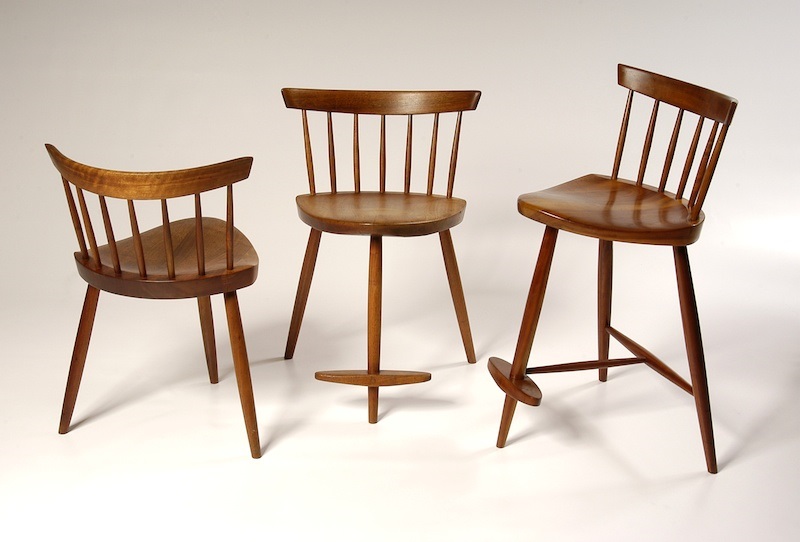
Fortunately, salvation would come in 1943 from Antonin Raymond who vouched for him and took him to his Pennsylvania farm. After a while he buys a piece of land on which he builds his own house and workshop according to his own plans.

This difficult life path leads him to his vocation as a woodworker, as he will tell himself all his life. He worked with wood in a style that was different from other woodworkers. Unlike the others who took the straight side of the trunk, he preferred the side where the trunk forked, because there the wood had a more interesting design.
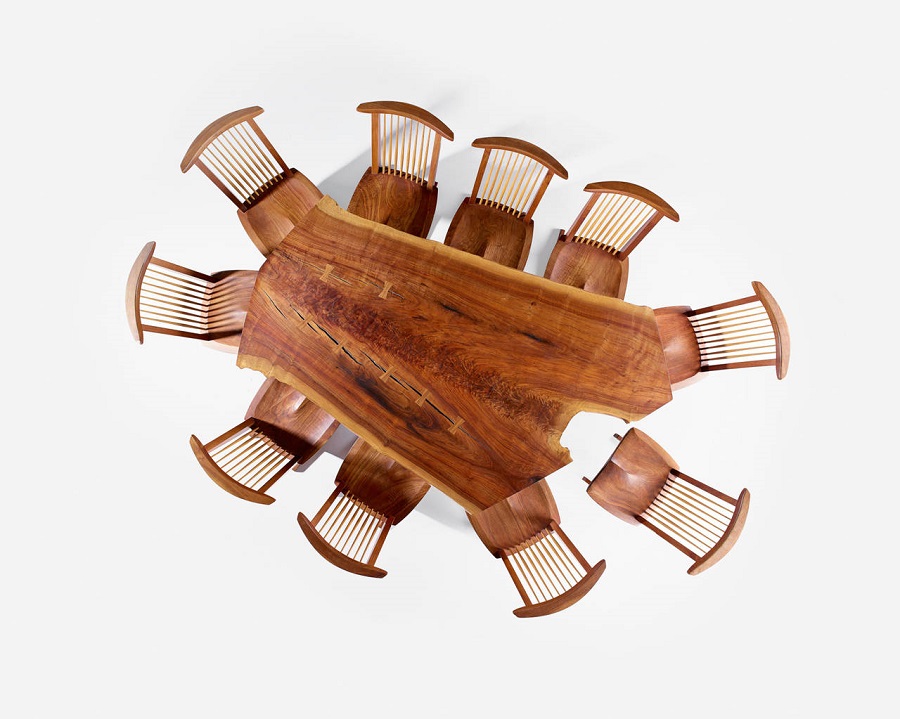
He worked a lot with American walnut wood, cut at maturity when the dimensions were considerable.
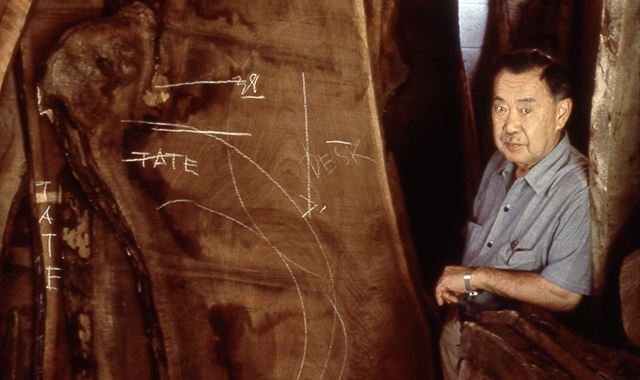
Also, consider that each part of the tree has a specific purpose and can be used to create a single object. That purpose must be sought, not just any purpose. He made the objects by processing the wood as little as possible, leaving its natural, sometimes wild beauty.
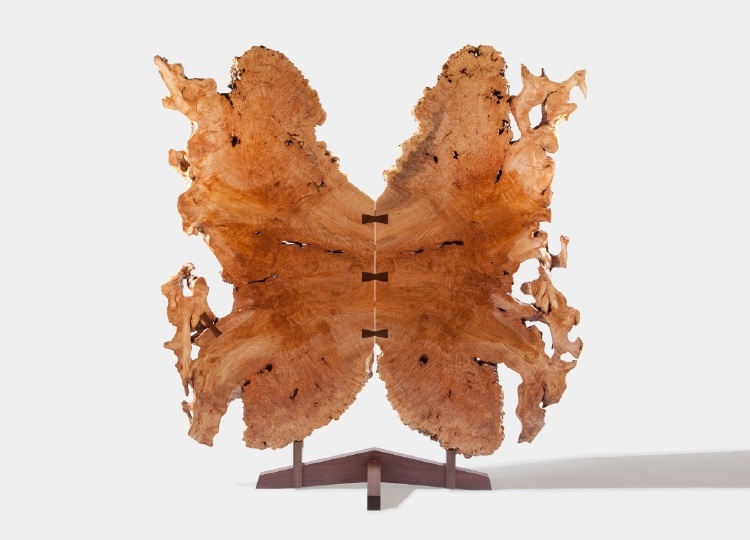
One-slice wood tabletops are brought into furniture design by Nakashima. And the clamping of cracks, weaker areas or 2 planks together with wooden bow ties can be considered his signature.
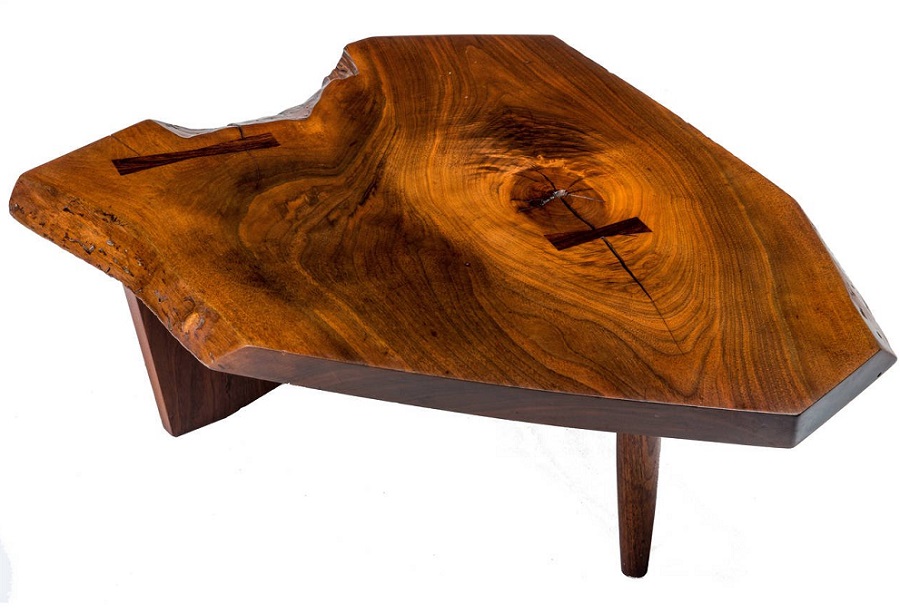
George Nakashima has designed and made many pieces of furniture but never signed them. He also designed for well-known manufacturers (Knoll and Widdicomb-Mueller), but those too bore the manufacturer's logo, not the designer's. Regardless of who he designed for, he continued to work in his own studio, continually growing in influence and notoriety and being sought after by household names. In 1973 Nelson Rockefeller commissioned 175 pieces for his New York home.

In the 1960s he began teaching his own woodworking techniques, holding workshops in the USA, Japan and India. His distinctive style - a blend of American, Japanese and international modern art - has won him numerous awards, and his furniture pieces are exhibited in famous museums in the US and Japan.
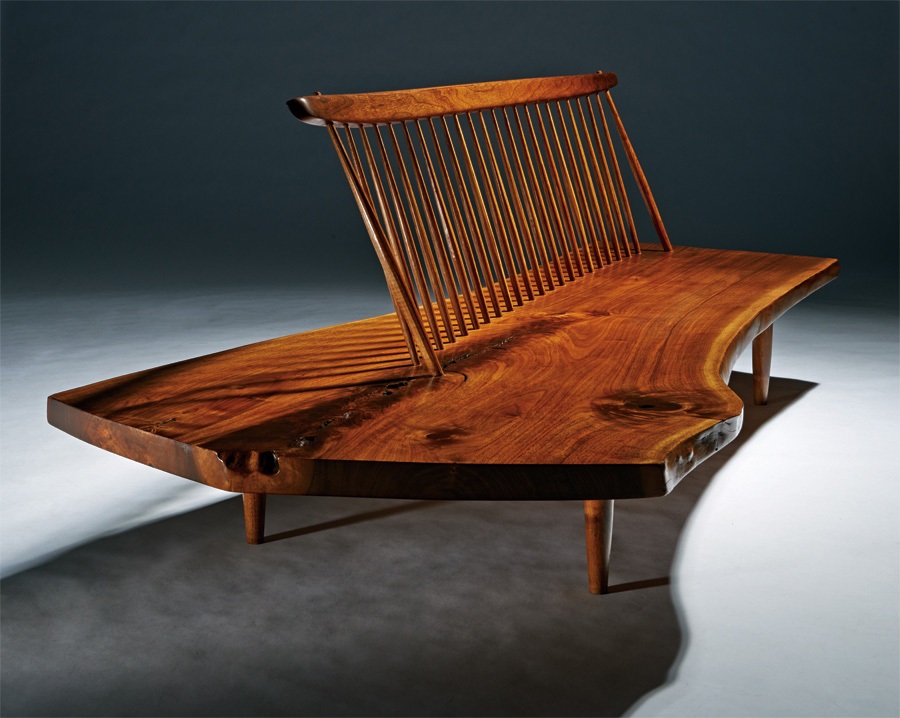
Today his art is carried forward by his daughter Mira, with whom George Nakashima worked during his lifetime. Mira is now a recognized and appreciated designer. The studio uses the same traditional techniques promoted by Nakashima, the same philosophy of dealing with wood, with handwork being the one promoted.
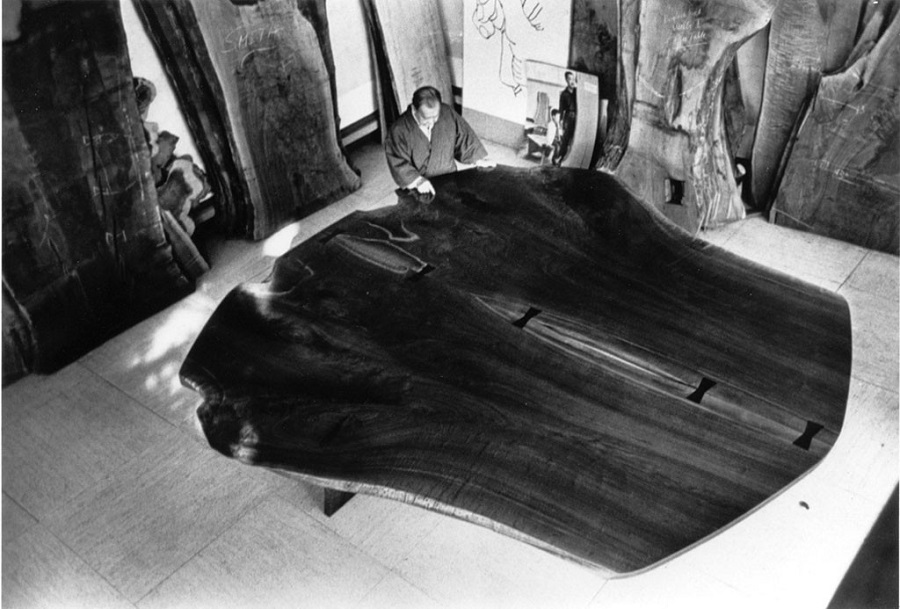
Alongside Sam MaloofGeorge Nakashima is part of the history of woodworking. Their respectful way of treating wood and their exquisite techniques have put them forever in the international gallery of those who have made an art of woodworking. simple pieces of furniture.






























Beautiful and extremely interesting! Thanks for the article!
And I thank you for following us.
All the best!
Great article, thanks! I had heard of him, but more in passing, a little biography was more than welcome!